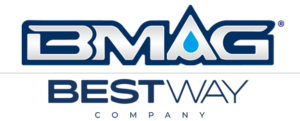Copper Alloy Designation Standards across Europe, North America, and other countries utilize distinct systems to classify copper and its alloys. Each system has its unique designation method, providing clarity in identifying copper materials.
European Copper Alloy Designation Standards: CEN
North American Copper Alloy Designation Standards: ASTM/CDA
International, French, and German Copper Alloy Designation Standards: ISO/NF/DIN
British Copper Alloy Designation Standards: BS EN
Russian Copper Alloy Designation Standards: GOST
Japanese Copper Alloy Designation Standards: JIS
European Copper Alloy Designation Standards: CEN
In Europe, the Comité Européen de Normalisation (CEN) has developed a unified system using a six-digit alphanumeric code. The first letter, “C“, denotes a copper alloy. The second letter specifies the product form:
B: Ingot for re-melting to produce cast products
C: Cast products
F: Filler materials for brazing and welding
M: Master alloys
R: Refined unwrought copper
S: Scrap
W: Wrought products
X: Non-standard materials
Three numbers follow to identify the material, and the final letter classifies individual copper material groups, expanding the designation system’s capacity.

North American Copper Alloy Designation Standards: ASTM/CDA
The Unified Numbering System (UNS), managed by the American Society for Testing and Materials (ASTM) and the Society of Automotive Engineers (SAE), standardizes copper alloys in North America. This system employs five-digit numbers preceded by the letter “C”. The UNS system builds upon the older three-digit system from the Copper Development Association (CDA). For instance, CDA Alloy No.360, a free-cutting brass, is now UNS C36000. UNS designations are integral to ASTM, ASME, and SAE standards.
C10000 – C79999: Wrought alloys
C80000 – C99999: Cast alloys

ASTM further categorizes copper alloys into series:
C100 Series: Coppers
C200 Series: Brasses
C300 Series: Leaded Brasses
C400 Series: Tin Brasses
C500 Series: Phosphor Bronzes
C600 Series: Bronzes
C700 Series: Nickel Silvers
These categories are further divided into six major groups: coppers, high-alloy coppers, brasses, bronzes, copper-nickels, and nickel silvers. Alloys outside these categories are termed “other copper-zinc alloys” (wrought) or “special alloys” (cast).
International, French, and German Copper Alloy Designation Standards: ISO/NF/DIN
The International Organization for Standardization (ISO), French Association Française de Normalisation (AFNOR), and German Deutsches Institut für Normung (DIN) use similar naming conventions for copper and copper alloys. These standards typically begin with “Cu” followed by the chemical symbols of the alloying elements and their percentages. For example, CuZn39Pb3 represents a brass alloy with 39% zinc and 3% lead, while CuSn6 denotes a bronze with 6% tin. This unified approach facilitates easy comparison and understanding across these standards. Specific examples include:
ISO/NF/DIN CuZn37: Brass with 37% zinc
ISO/NF/DIN CuSn5PbZn5: Bronze with 5% tin, lead, and 5% zinc
ISO/NF/DIN CuNi10Fe1Mn: Copper-nickel alloy with 10% nickel, 1% iron, and manganese

British Copper Alloy Designation Standards: BS EN
British Standards (BS) for copper and copper alloys use a system similar to the European CEN standards. The designation typically begins with “BS EN” followed by the standard number and material designation. For example:
BS EN 12163 CW508L: Copper-phosphorus alloy rod
Russian Copper Alloy Designation Standards: GOST
Russian copper standards are defined by the GOST (State Standard) system. The naming convention typically includes the material type followed by a number. For copper alloys, it often starts with “М” (for медь, meaning copper). Examples include:
М1: Pure copper
ЛС59-1: Brass with 59% copper and 1% lead
БрОЦС4-4-2.5: Bronze with 4% tin, 4% zinc, and 2.5% lead

Japanese Copper Alloy Designation Standards: JIS
Japanese JIS copper standards align closely with ISO standards. They begin with the prefix JIS, followed by “C” for copper and copper alloys, and a four-digit number indicating alloying elements.
Numeric Part:
First Digit:
Generally indicates the primary component of the alloy. For example:
“1” represents pure copper (Cu).
“2” indicates copper-zinc alloys (brass).
“3” indicates copper-zinc-lead alloys.
“4” indicates copper-zinc-tin alloys.
“5” indicates copper-tin alloys (bronze).
“6” indicates copper-aluminum alloys.
“7” indicates copper-nickel alloys.
Second Digit:
Usually indicates the type of major alloying element present. For instance:
“0” means no additional alloying elements.
“1” indicates adding a specific alloying element (such as tin, nickel, etc.).
Third Digit:
Represents the content or characteristics of other alloying elements. This number can denote specific ratios or additional properties of the alloy.
Fourth Digit:
Often used to further differentiate various alloys within the same category, possibly indicating specific processing characteristics or applications.
JIS C1020: Cu 99.9%
JIS C2720: Cu-Zn (brass)
JIS C5191: Cu-Sn-P (phosphor bronze)
JIS C3601: Cu-Zn-Pb (lead alloyed brass)
JIS C6801: Cu-Zn-Al (brass)
JIS C4430: Cu-Zn-Sn (brass)

BMAG Valves
In the rapidly advancing process of globalization, our clients are spread across the globe, making it essential to understand the various standards of different countries to serve them better. BMAG is well-versed in a wide range of global standards and policies, allowing us to provide the most professional service to our customers. If you have specific material requirements for your products, please feel free to reach out to our expert customer service team for assistance.







